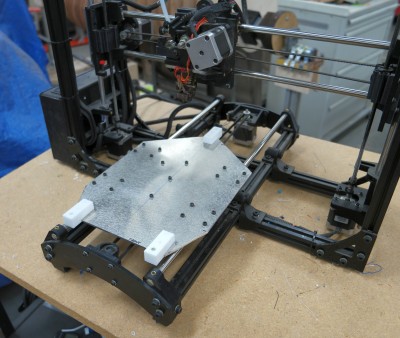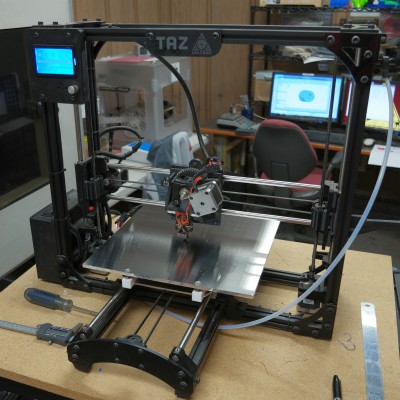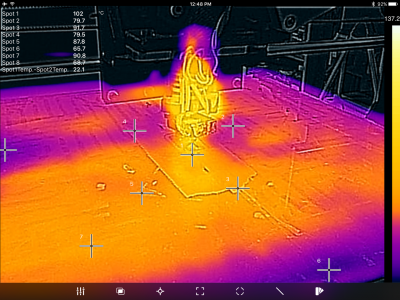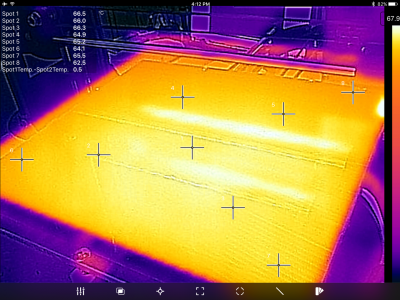The glass bed on the Makerspace’s Taz 3 printer recently did what glass does- it broke. Time for a repair and upgrade!
I started by cutting the under carriage down and modifying it for a three point leveling system instead of the stock four point undercarriage/bed plate bending scheme.
The original heater was separated from the shards of glass and glued to the 12″ x 12″ x 1/4″ cast aluminum tooling plate using high temperature silicone. 3x #10 countersunk screws and springs support the plate on heat resistant teflon blocks. The whole assembly stands about 1 cm taller than the original bed plate so I printed a small extension for the Z=0 set screw so it would trip the switch from the higher position. I tested the heating time and found that the bed gets up to 110C in about 16 minutes- a little slow, but we probably won’t be printing much ABS with this open frame machine anyway. Next- run PID autotune for the bed heater and adjust acceleration (greater moving mass means lower acceleration and print speeds).
Some of you might ask why I would replace the glass bed with a piece of cast aluminum tooling plate. Thermal performance is one good reason. Here’s an IR photo of the original glass bed:
Notice the hot and cool spots- 30C temperature variation across the bed.
Here’s what the new aluminum bed plate looks like:
Temperature variation is just a few degrees over the entire surface (the bright almost horizontal lines are not hot spots- they are reflections of the X axis guide rails).
I have run the PID tuning on the new bed and modified the firmware with the new constants. It heats from 25C to 100C in about 9 minutes.
I officially declare the Taz printer ready for action.



